The Crown of Berenice
Oil on canvas, cm 87 x 125
With frame, cm 112 x 147
The painting presents an iconographic theme absolutely rare and unknown, that of the Crown of Berenice, of mythological derivation. The protagonist of this painting is Berenice Evergete, queen cyrenaica wife of Ptolemy III, Pharaoh of Egypt: the woman, of extraordinary beauty, had very long and shiny hair, reason for admiration and envy for all the women of the kingdom. Shortly after the wedding, Ptolemy III left for a military campaign in Syria, with very uncertain outcome, and Berenice, concerned about the safety of her husband, made solemn vows to the goddess Aphrodite, Offering her her own beautiful hair if she had shown kindness and returned her beloved unharmed and victorious over the enemies. Ptolemy returned triumphant from the military campaign and Berenice, keeping her promise, once received by a messenger the news of the war success of Pharaoh, he enclosed his beautiful hair in a long plait that he cut and brought as a gift to the temple dedicated to Aphrodite. The next day, however, there was no trace of the precious offering. There was a loud noise and someone called the priest of the temple dedicated to the Egyptian god Serapis accusing him of having removed the braid scandalized by the outrage that the queen would do to the local gods by offering her vote to a Greek deity. Berenice was desperate and her husband, returning from the front, moved by anger and outrage, had all the doors of the city closed and searched it in vain. To appease the frantic search for the precious offering of the queen were the words of Conone di Sarno, great sage, mathematician, astrologer and astronomer at court, known for his friendship with Archimede from Syracuse.Conone, raising his fingers to the sky, pointed out three stars and pointed out that there was nothing to worry about, as the gods had so pleased the offering that they raised the braid to heaven and fixed it in the firmament. It was so that from that day, those three stars that form a small V near the center of the tail of the Ursa Maggiore, thanks to Conone, took the name of Coma (or Chioma) of Berenice.
It was Callimaco - the most famous of the Alexandrian poets, a man of erudite and great culture who lived from 315 to 240 B.C. - who first narrated this story in a poem of which, unfortunately, only a few fragments have come down to us, Only two portions of papyrus from Oxyrhynchus for a total of 40 verses. Fortunately, the text was masterfully translated into Latin by Gaius Valerius Catullus (85-54 BC) who, by inserting it among his works, allowed the dissemination of the myth, known to this day: just think Ugo Foscolo (1778-1827) He wrote a vulgar Italian version in 1803.
Berenice (25 December 267 B.C. - 221 B.C.) was a very important female figure in the Greek world. She was queen consort of Cyrene from 250 to 249 B.C. and of Egypt from 246 to 222 B.C. and administered the two lands while Ptolemy III was engaged in the third Syriac war, the so-called "Laodicean war". In 222 B.C. Ptolemy III died and, with the accession of Ptolemy IV Philopator to the throne, Berenice was assassinated along with other members of the royal family, suspected of a conspiracy against the newly elected pharaoh. After their death, Berenice and her beloved husband Ptolemy were deified and placed in the dynastic cult of the Dei Evergeti.
In this painting, the queen, having placed her crown, is represented in the act of gathering, with the help of a servant, her thick hair into a braid: After receiving the message of victory in the battle of Ptolemy from the young man depicted on the left of the composition, the queen is in fact ready to respect the vow and to donate her hair to the powerful goddess Aphrodite.
The depiction of queens and heroines from myth and ancient history is common in 17th century Northern Italian painting. The fashion of baroque painting had spread the faces of women in history, original images of virtue and sensuality that were sometimes gathered in private rooms, a kind of female court to look at and remember in the example: Dido, Cleopatra, Judith and Lucretia were undoubtedly the most represented. Although less fortunate at the iconographic level, the figure of Berenice also appears in some paintings from the seventeenth and eighteenth centuries, among which we remember that of Padovanino (1588-1649), now in private collection (exhibited at the recent exhibition The braids of FaustinaHairstyles, women and power in the Renaissance, held at the Gallerie d'Italia in Vicenza in 2023), in which the queen consort of Pharaoh is presented in the act of giving her thick braid to the priest of the temple of Aphrodite, that of Rosalba Carriera (1673-1757) of the Detroit Institut of Art, in which the woman is represented cutting her hair, and that of Lorenzo Pécheux (1729-1821) of the Galleria Sabauda in Turin. The particular iconographic scheme of this painting, which includes the characters of the servant and the messenger with the cartouche, as well as objects such as the comb and the crown, appears pedissequently retaken in The crown of Berenice by the student of the Cavalier d'Arpino active in the Veneto area Francesco Ruschi (1610-1661): the work, dated around the years '40 of the '600 and today at Palazzo San Bonifacio in Padova, is most likely contemporary compared to this painting.
The theme of Berenice’s braid enjoys a relative success in the Genoese area, as shown by the beautiful painting of the museum in El Paso, Texas. Both the historical-mythological theme and the atmospheres of the painting suggest that it was executed in Liguria: many are the similarities with the works of the two major exponents of the Genoese baroque, Domenico Piola (1627-1703) and Domenico Fiasella (1589-1669), which the artist seems to be looking at with regard to the colors, the brushstroke and the faces.
The object is in good condition


























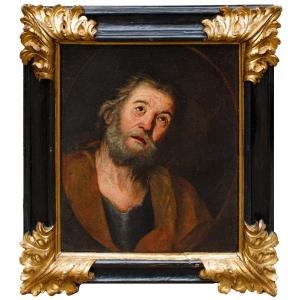
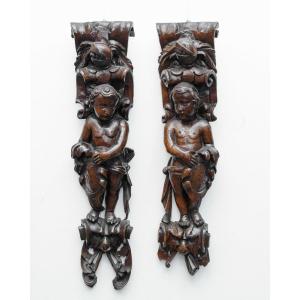

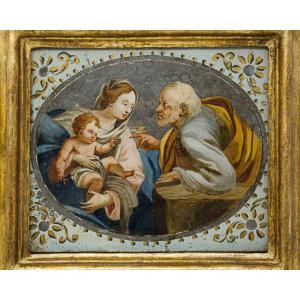







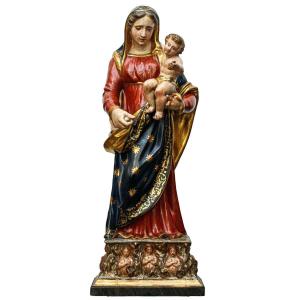




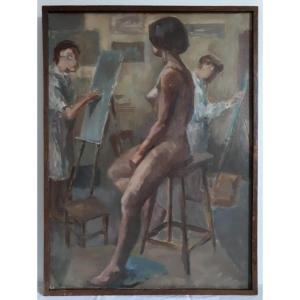
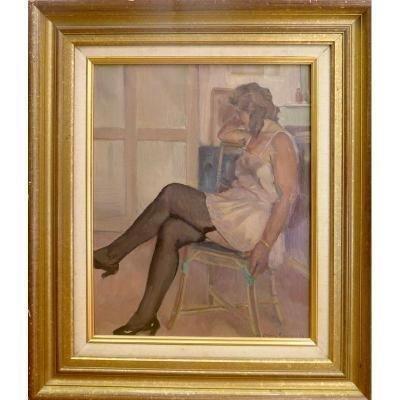




 Le Magazine de PROANTIC
Le Magazine de PROANTIC TRÉSORS Magazine
TRÉSORS Magazine Rivista Artiquariato
Rivista Artiquariato